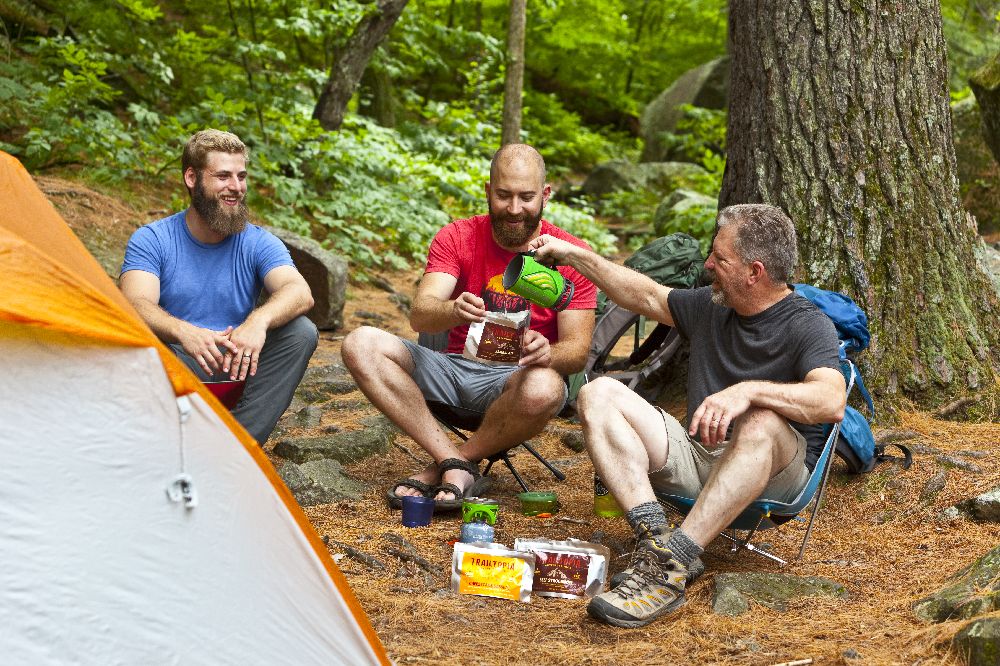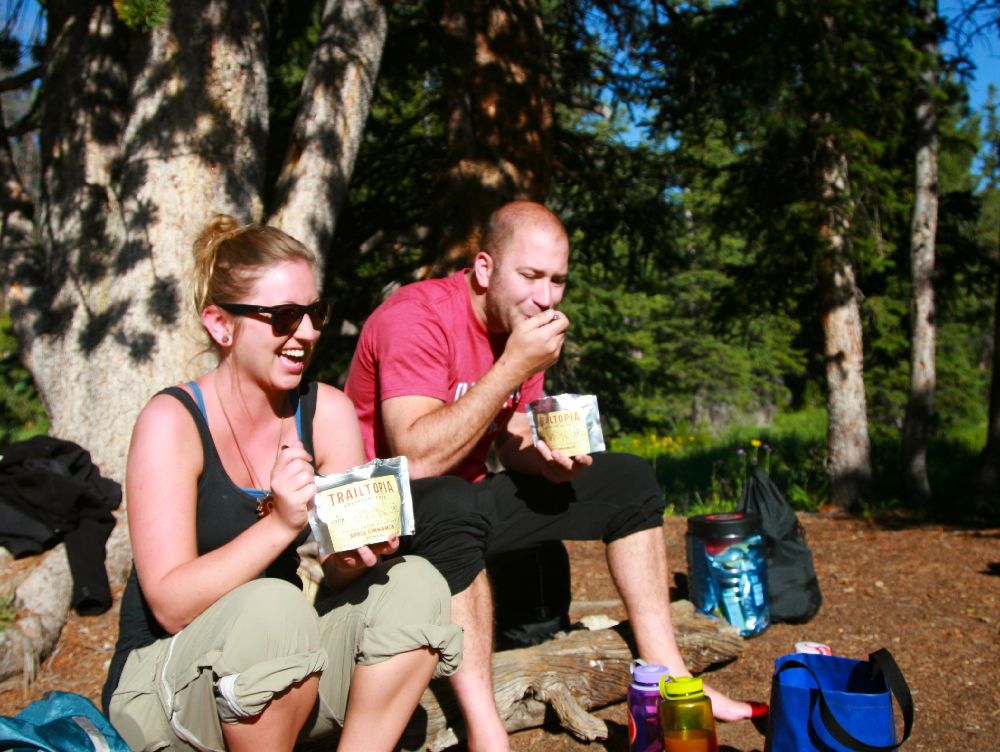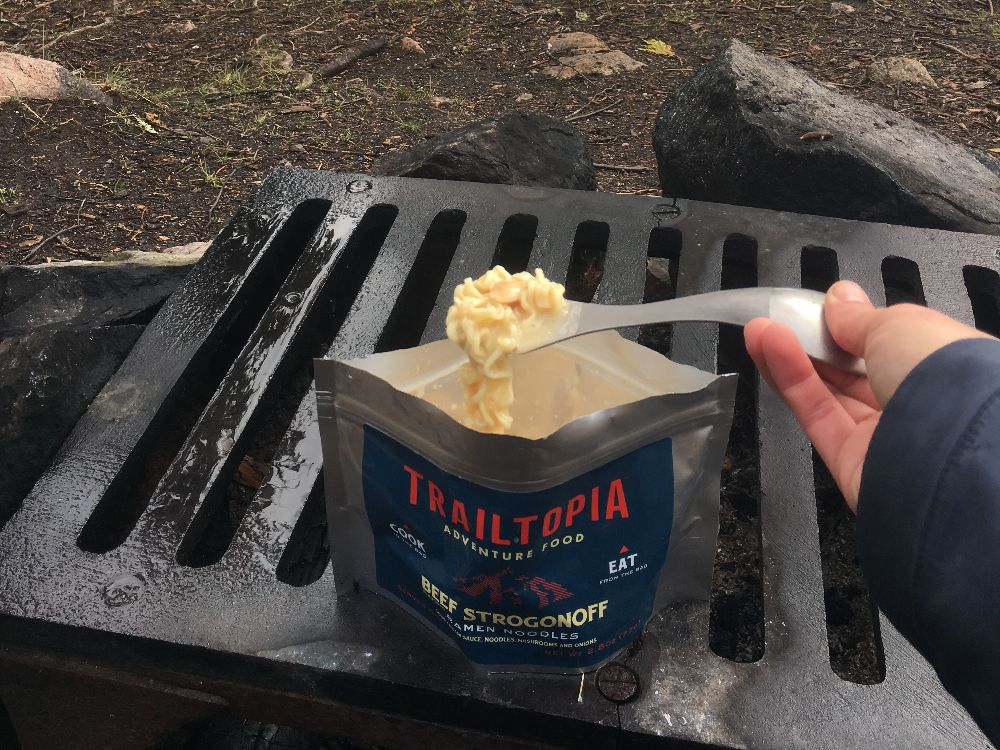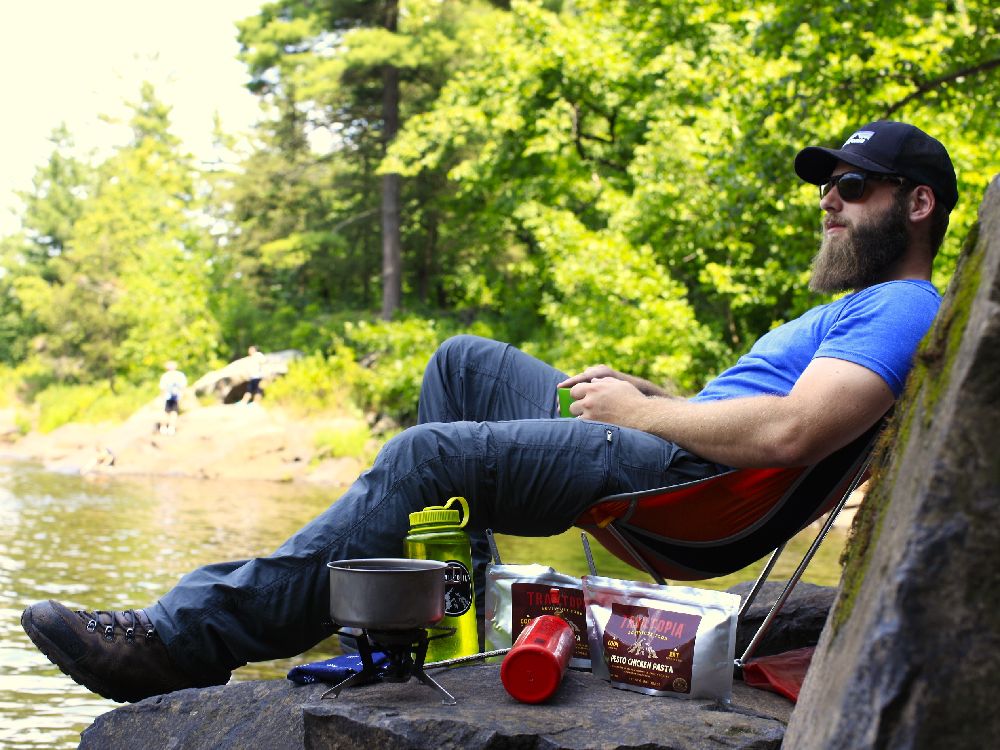
If you look closely at the back of each one of our meals, you’ll see the reminder: “Keep our environment clean and pack out all trash.” Like you, we care deeply about protecting and preserving the beautiful places we explore for generations to come.
Taking care of our environment isn’t always the easiest, prettiest, or most convenient thing to do, but with a little extra effort, you can make a big difference in protecting the natural landscape and the plants and wildlife that call it home.
In this article, we’ll give you a quick refresher on the 7 Leave No Trace principles, share what to do if you see someone not following them, and share the 5 most common trail food mistakes and how to avoid them.
Quick Refresher on the Leave No Trace Principles
No conversation about responsible outdoor adventures would be complete without mentioning the Leave No Trace principles. These seven guidelines serve as a roadmap for exploring the outdoors with care. At the heart of LNT is a simple idea: respect. Respect for the land, the wildlife that calls it home, the people sharing the trail, and those who will walk it after us. When we follow these practices, we’re not just visitors, we’re stewards of the wild.
The 7 Leave No Trace Principles:
Plan Ahead and Prepare – Know the regulations, weather, and terrain. Travel in small groups to reduce impact.
Travel and Camp on Durable Surfaces – Stick to trails, rock, gravel, dry grasses, or snow. Camp at existing sites where possible.
Dispose of Waste Properly – Pack it in, pack it out. This includes food scraps, wrappers, and even biodegradable waste like fruit peels.
Leave What You Find – Don’t pick wildflowers or take “souvenirs.” Let others experience the wilderness as it is.
Minimize Campfire Impact – Use a lightweight stove instead of building fires, or only use established fire rings if allowed.
Respect Wildlife – Observe from a distance, don’t feed animals, and store food securely.
Be Considerate of Others – Yield to others on the trail, keep noise levels down, and respect solitude.
Lead by Example, Not Judgment
One of the simplest yet most impactful ways to protect the outdoors is to set a positive example. When people see you practicing Leave No Trace, it leaves an impression and often inspires them to follow suit. The flip side? Poor habits are just as contagious. A single careless act can give others permission to think, “If they did it, it must be fine.”
You can also spread good habits by sharing your own sustainability wins, whether that’s swapping tips with friends, posting your eco-friendly hacks online, or just talking about what’s been challenging and what’s worked for you. Keep your approach encouraging and friendly. A little positivity can go a long way in motivating others to make changes that, over time, really add up.
Quick note: If you see someone not following the LNT principles or doing one of these 5 common trail food mistakes, don’t become aggressive or put yourself in a spot where an altercation might occur. The forest service would much rather you report it to them than put yourself in a situation.
5 Common Trail Food Mistakes and How to Avoid Them to Keep Nature Pristine
1. Not packing out biodegradable items
This is the most common trail food mistake we see! Yes, your apple core will decompose, but it will take about 2 months. In that time, it will attract wildlife closer to the trail and where human activity occurs, allowing them to seek out food in that area. If predators find your scraps, you’re endangering future hikers. If it is prey animals that discover it, you’re putting that animal and its future offspring at risk. If you have something particularly messy like “wet” leftovers, we suggest using a used Trailtopia pouch, as they tightly seal shut and stay closed under pressure. Remember, it is your responsibility to pack out all uneaten food items to protect wildlife and future hikers.
2. Putting trash in stuff pockets vs. zippered pockets
We’ve all been there, reaching into a shallow shorts pocket for our phone or a snack, only to have something else tumble out. If you’re lucky, you or a sharp-eyed hiking buddy, catch it before it gets left behind. But in the backcountry, a forgotten candy wrapper or snack bag doesn’t just disappear.
To avoid this trail food mistake and other accidental litter, always stash your smaller food trash in a secure, zippered pocket, hip belt pouch, or a designated trash bag that seals shut. This way, nothing slips out when you’re on the move, and you can be confident you’re packing out everything you brought in. It’s a simple step that keeps trails cleaner for everyone who comes after you.
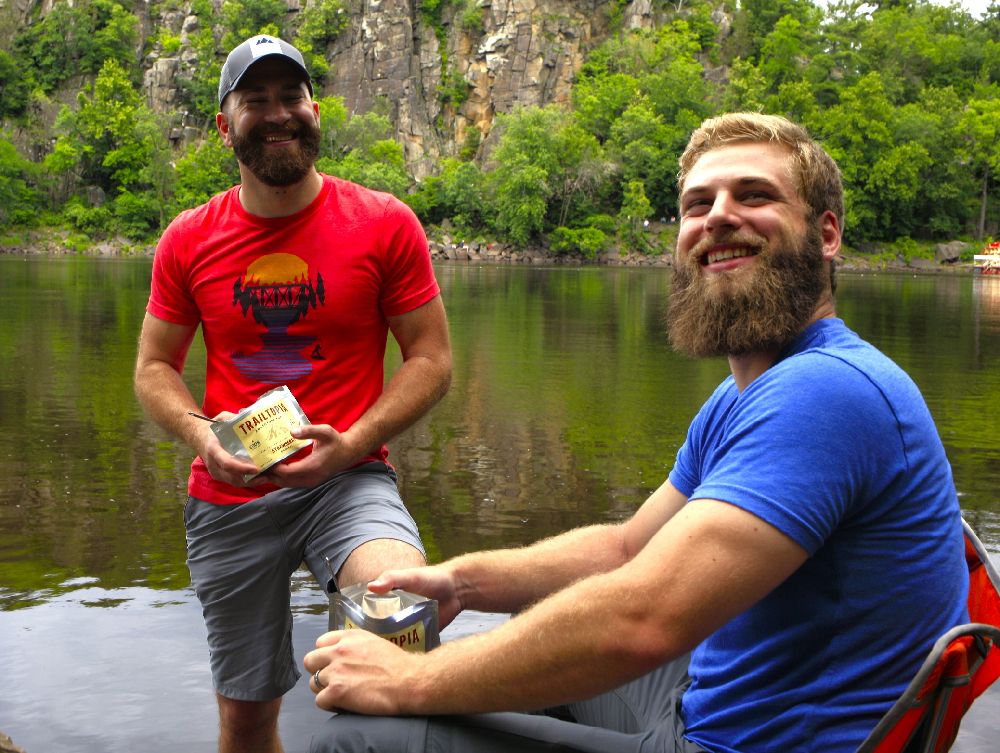
3. Forgetting to de-trashify your food before your hike
Most of the food we bring into the backcountry, whether it’s store-bought snacks or delicious Trailtopia meals, comes in some form of packaging. While that packaging is great for keeping food fresh, it can quickly turn into extra bulk and trash you’ll have to carry out.
Before you hit the trail, take a few minutes to “de-trashify” your meals. This could mean removing excess cardboard, trimming down resealable pouches, or even combining multiple small items into a single reusable bag. For example, you can remove the tear-off top and remove the oxygen absorber of your Trailtopia meal at home, so you have less trash that could accidentally get left behind.
Not only will this lighten your load and save space in your pack, but it also reduces the amount of micro-trash that could get lost on the trail. A little prep at home goes a long way toward keeping our wild spaces truly wild.
4. Rinsing your dishes in streams or lakes
We at Trailtopia hate dishes. We prefer to let our food cook in the bag and simply lick our utensils clean, but obviously, this isn’t always feasible. Another common trail food mistake is rinsing dishes in water sources. The problem is that dirty dishwater and food scraps can pollute our rivers, lakes, and streams. If you do need to do dishes in the backcountry, simply follow these steps.
Get at least 200 feet, 70 big steps, away from any water sources, campsite, and trails.
Scrape or wipe your dishes free of all food scraps to be packed out in a trash receptacle.
Dig a cathole, 6-8 inches deep.
Wash your dishes and dispose of the dirty dishwater into the cathole.
Cover it up and feel great about taking care of your waste responsibly.
Note: The LNT website suggests using some sort of straining method for dishwater if you are unable to adequately scrape food scraps from containers.
5. Forgetting to do a ground sweep after meals
The last common trail food mistake is leaving food pieces and trash on the ground after a meal. As big foodies, we often are very excited when it's meal time and forget pieces of packaging on the ground or eat a little crazily and drop pieces of food on the ground, which can cause issues for wildlife. Harmless-seeming pieces of food are a tempting invitation that can lead to unhealthy eating habits and dangerous animal encounters. Just like you do a sweep for forgotten gear before leaving camp, take a minute after each meal to scan the ground for any fallen food and trash. Scoop it up, pack it out, and you’ll help keep your campsite safe for you, future hikers, and the animals who call it home.
Final Thoughts on Trail Food Mistakes and How to Avoid Them
Although many Leave No Trace guidelines seem like common sense, many aren’t. We are incredibly grateful to our community that continues to learn and grow with us. Every time we put out a new article sharing how to care for our environment better when hiking and backpacking, we always have someone who says that they didn’t previously know about a certain way of doing things or simply didn’t think of it.
The goal of our work is to make your adventures as enjoyable as possible, while protecting natural areas for future generations. Although taking care of the environment isn’t always the easiest, it’s the right thing to do. So next time you are out exploring nature, remember these common food trail mistakes and how you can do your best to preserve natural places for future generations.
Did you know about each of these common trail food mistakes? Share your story in the comments 👇
















